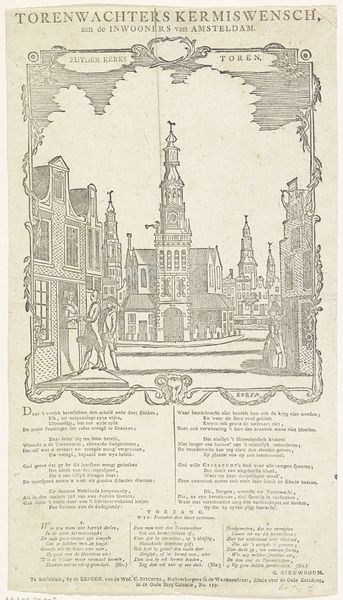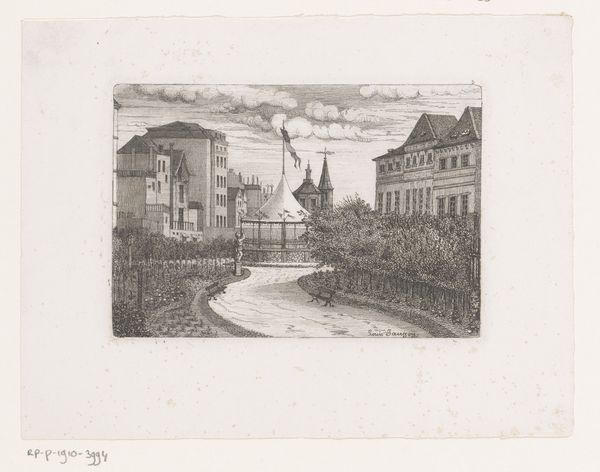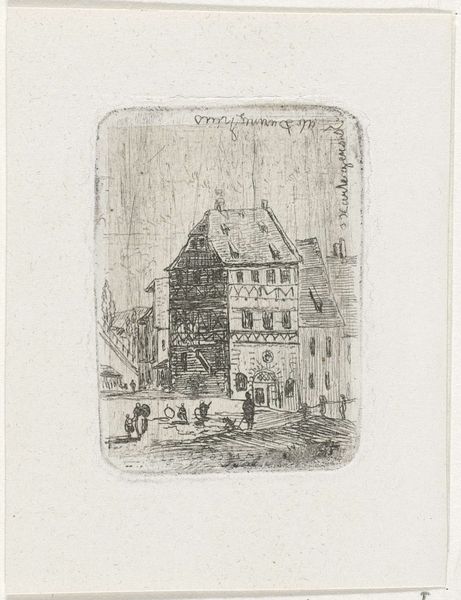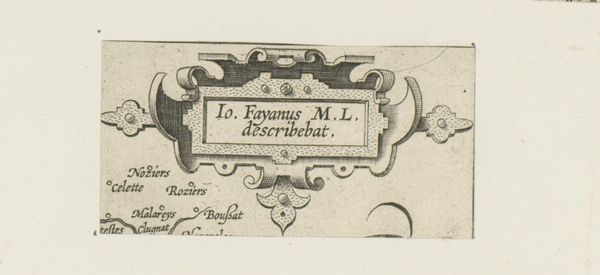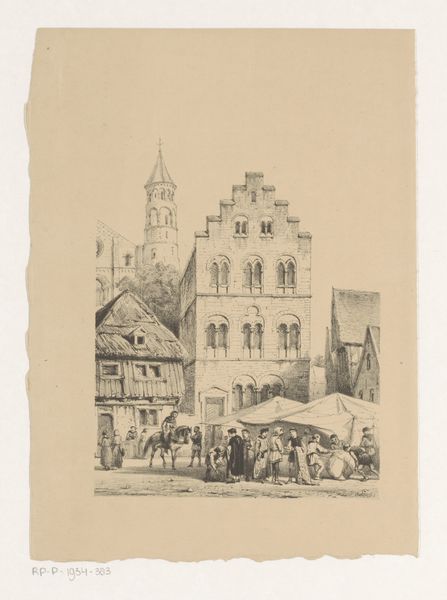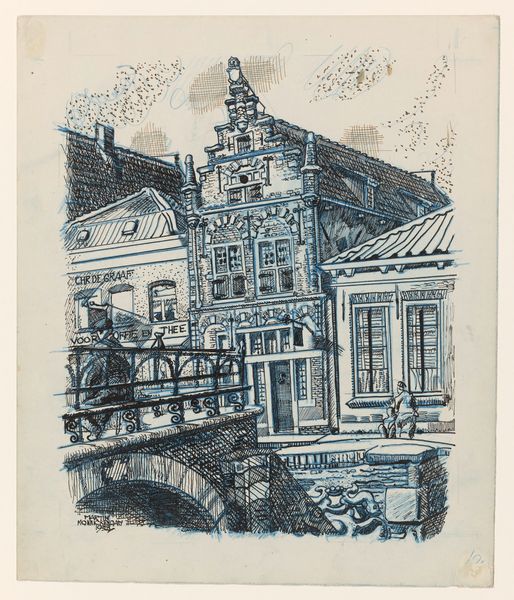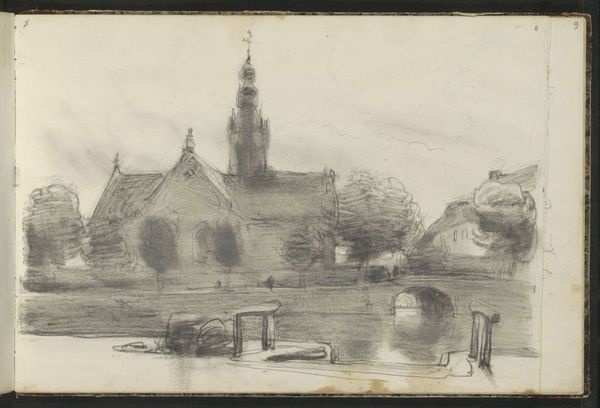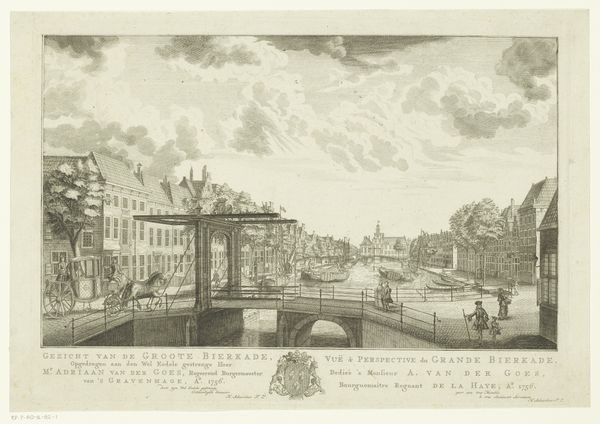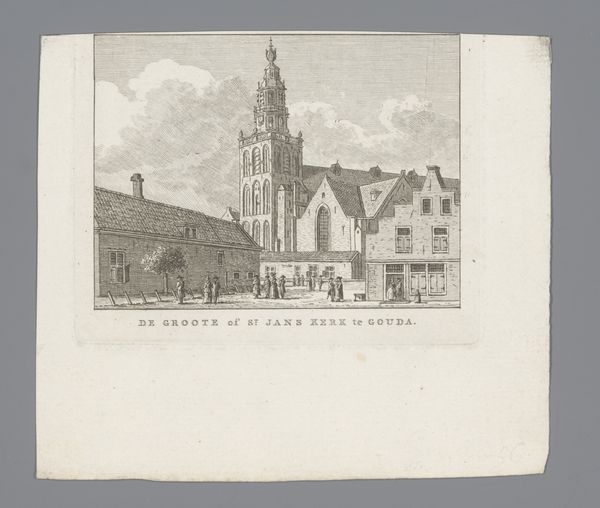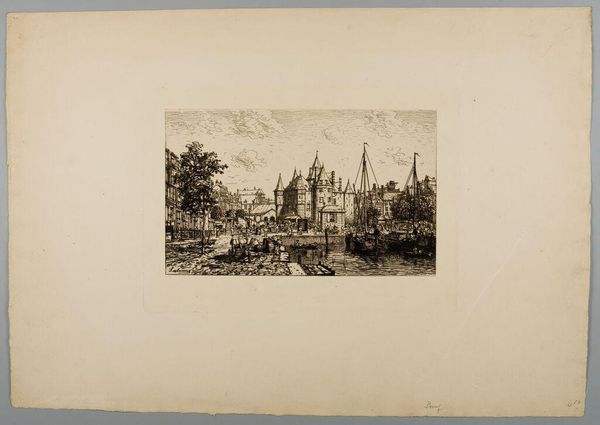
graphic-art, print, etching, photography, engraving
#
graphic-art
#
dutch-golden-age
# print
#
etching
#
photography
#
cityscape
#
engraving
Dimensions: height 86 mm, width 125 mm
Copyright: Rijks Museum: Open Domain
Curator: Willem Steelink the Second's "Westertoren en fotostudio", dating from around 1866 to 1886, blends etching and engraving. The overall feeling I get is quite complex for such a small image. Editor: I find it melancholic, honestly. The cool, muted tones, the suggestion of labor – both artistic and perhaps mundane – it feels very reflective of its time. Curator: Absolutely. Etchings like this played a vital role in the 19th century, disseminating imagery and cultural ideals. The inclusion of the Westertoren locates us firmly in Amsterdam, turning the image into a sort of commercial calling card of the location and culture in the same moment. The Dutch Golden Age, a couple of centuries prior, heavily influenced depictions of Dutch identity even at the time this print was being produced. Editor: And the tower itself acts as such a potent symbol, doesn’t it? Towers frequently speak to aspiration, a link between the earthly and the divine, and perhaps, here, a claim of Amsterdam as a cultural beacon. And on another symbolic note, framing the cityscape next to the photography studio, as related and distinct, it does feel symbolic of representing and understanding the world. Curator: Exactly. The self-awareness is interesting: presenting not just the city but the very act of image-making within the same frame. The print blurs boundaries between documentary and idealized visions, the very role of the tower being a symbolic representation in itself. I'd be intrigued to know the politics around cityscape representation. Who was this studio trying to appeal to, who were the intended viewers? Editor: That meta aspect adds to its intrigue, definitely. There's a quiet power to it. A layering of meaning that extends beyond the literal representation. This coupling offers enduring motifs and concepts to consider, beyond its historic place as an engraving produced by Willem Steelink II. Curator: Agreed. It really underscores the idea that images always carry more than just what's immediately visible. Editor: Indeed. Thank you.
Comments
No comments
Be the first to comment and join the conversation on the ultimate creative platform.


